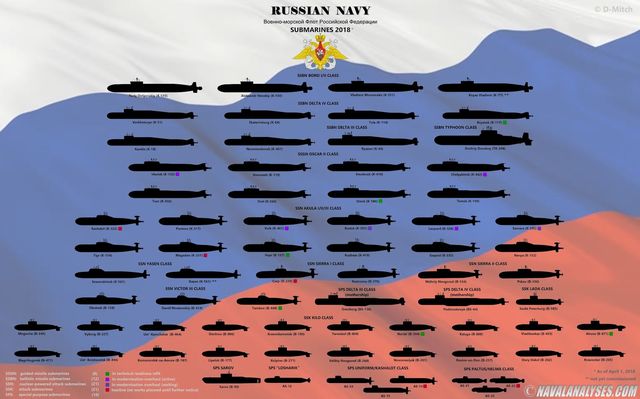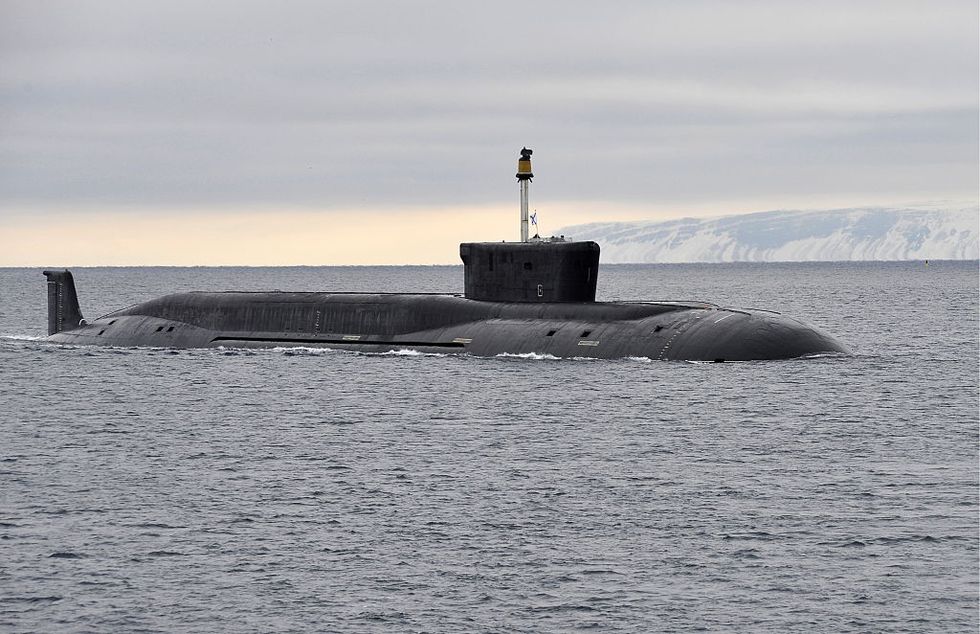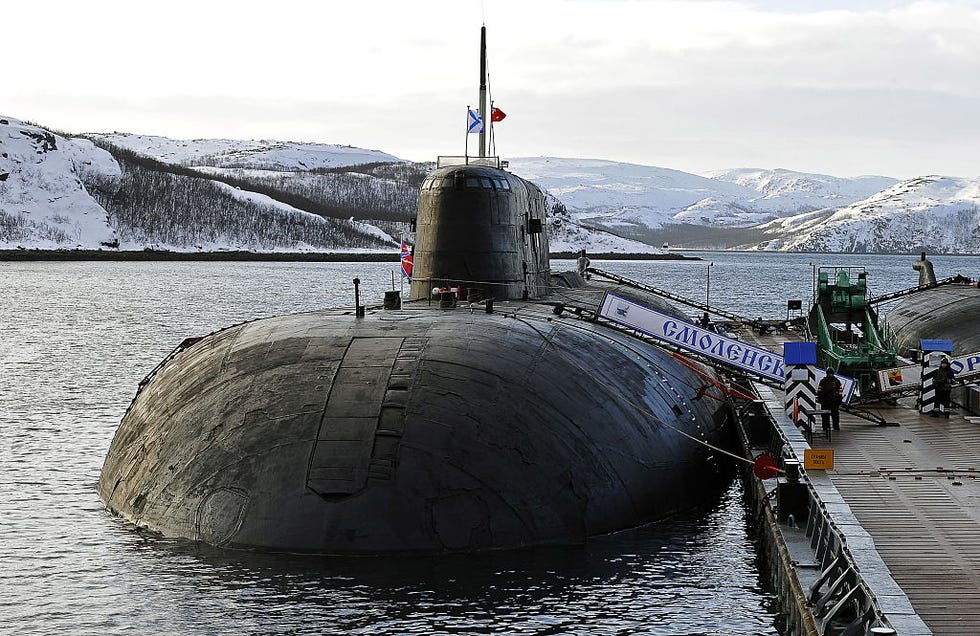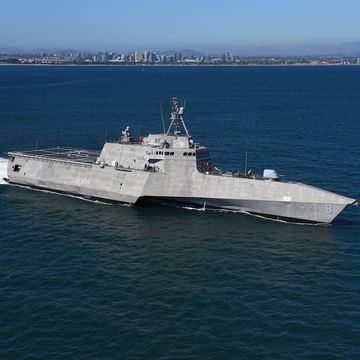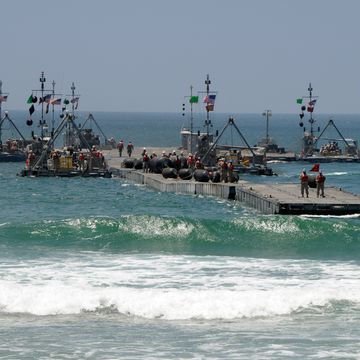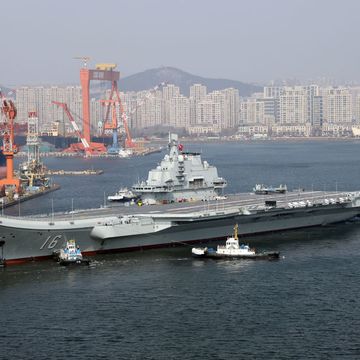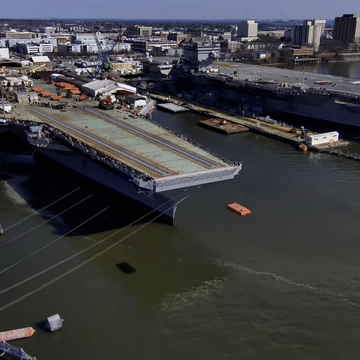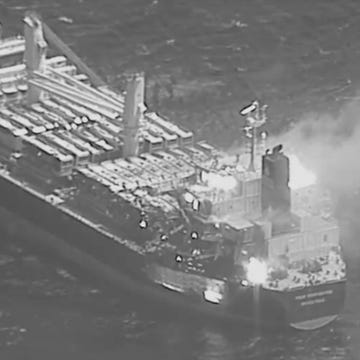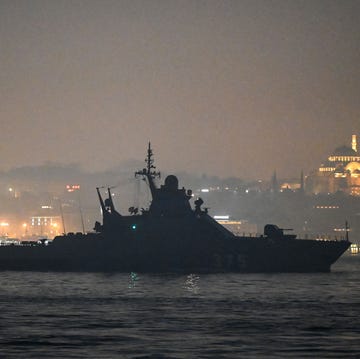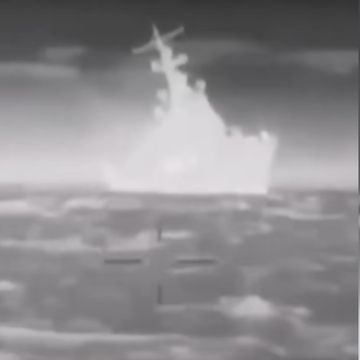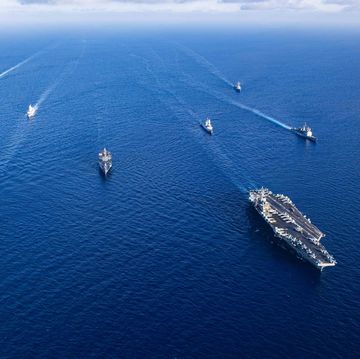A new infographic shows the underwater might of the Russian Navy and its fleet of 72 submarines, one more than the U.S. Navy at the time of this writing. Split between nuclear missile submarines, cruise missile submarines, attack submarines, and unique special mission and test submarines, the Russian Navy is no slouch.
Once again, the excellent website Naval Analyses (Twitter), creator of the United States Navy Submarines 2018 infographic, has released a new image (full size) that shows off the various classes of submarines in service with the Russian Navy.
The graphic starts off with some of the newest submarines at the top, the four ballistic missile submarines of the Borei class. These nuclear powered submarines each carry sixteen Bulava submarine launched ballistic missiles, each with a range of 5,800 miles and armed with six 150 kiloton nuclear warheads. Eventually, Russia will build eight Borei submarines. Rounding out Russia’s ballistic missile submarine force are seven Delta III/IV submarines carrying Sineva missiles and the last gigantic Typhoon-class submarine, Dmitri Donskoy, currently serving as a missile test boat.
Next up are the eight enormous Oscar-II-class guided missile submarines. Five hundred feet long and displacing 24,000 tons underwater, Oscar-IIs were originally commissioned by the Soviet Union to destroy U.S. Navy aircraft carriers with swarms of large, powerful cruise missiles. Each carries 24 P-700 Granit anti-ship missiles.
Unlike the United States, Russia has both nuclear-powered and diesel electric-powered attack submarines. Russia has twelve Akula I, II, and III-class, three Victor III class, and four Sierra I and II class nuclear attack submarines. All three classes date back to the Soviet Navy and the Cold War, although a handful were built after the fall of the USSR. More recently Russia has commissioned a pair of Yasen-class submarines, cruise missile submarines that could eventually replace the aging Oscar boats.
On the diesel electric submarine front, Russia has 21 Kilo-class submarines and one Lada-class submarine. Kilos are meant to operate closer to home, in places like the Black Sea and Mediterranean, and the boats in service range from Cold War-era builds to boats like the Rostov-on-Don, commissioned in 2014. The Lada class was built to replace the Kilos and submarine expert HI Sutton claims Russia is planning at least five boats.
Russia has a comparatively large fleet of special mission submarines. The Russian Navy has two enormous “motherships,” based on the Delta III and Delta IV hulls, for ferrying deep diving midget submarines. It also has one Losharik, three Nelma, and three Kashalot-class submarines designed for deep ocean ocean engineering work.
One submarine on this list is particularly ominous, the Sarov, a test platform for the Kanyon/Status-6 apocalypse torpedo, a nuclear-powered torpedo designed to attack coastal targets such as ports and cities with an enormous 100 megaton thermonuclear warhead. Status-6 is designed to bypass U.S. missile defenses, destroying entire coastal regions with nuclear blast, tsunamis, and rendering the area uninhabitable with long-lasting nuclear fallout.
The Russian Navy, at least on paper, has one more submarine than the U.S. Navy, although the U.S. submarine force is composed entirely of ballistic missile, cruise missile, and attack submarines. In other words, a pure fighting force. The U.S. Navy’s submarine fleet, unlike the Russian Navy, is entirely nuclear powered, although if the U.S. had neighbors as potential adversaries it would probably invest in non-nuclear submarines also.

Kyle Mizokami is a writer on defense and security issues and has been at Popular Mechanics since 2015. If it involves explosions or projectiles, he's generally in favor of it. Kyle’s articles have appeared at The Daily Beast, U.S. Naval Institute News, The Diplomat, Foreign Policy, Combat Aircraft Monthly, VICE News, and others. He lives in San Francisco.
